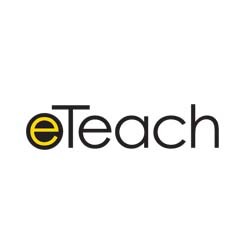Žiadne produkty
Produkt bol úspešne pridaný do košíka
0 ks tovaru Vo vašom košíku je 1 produkt.
Professional Development
- Akcia
- Business
- Gramatiky
- Metodiky
- Skúšky a zručnosti
- Practice and Pass
- Reading
- BULATS
- DELTA Natural English Series
- Delta Academic Objectives
- ECCE
- FCE
- IELTS
- KET
- Listening & Speaking
- PET
- Reading & Writing
- TOEFL
- TOEIC
- Vocabulary
- YLE
- Advanced
- BEC
- CAE
- First
- ILEC
- Listening & Speaking & Critical Thinking
- Reading & Writing & Critical Thinking
- Spotlight on Advanced
- Spotlight on First
- Writing
- Slovníky
- Učebnice
- Čítanky
- Špeciálne kurzy
- ELTeach
-

Gateway A2 Workbook
4,90 € -50% 9,80 €
Professional Development 27 produktov
- Predchádz.
- 1
- 2
- 3
- Nasl.
Teaching Culture Perspectives In Practice
The book offers multiple viewpoints on the interrelationship between language and culture and how they serve to teach meaning, offer a lens of identity and provide a mechanism for social participation Authentic classroom experiences engage the reader and offer teachers invaluable support as they expand their ideas about how language and culture work...
33,90 €Teaching English As a Second or Foreign...
Now in its fourth edition, this comprehensive, best-selling methodology resource gives both prospective and experienced ESL/ELT teachers the theoretical background and practical applications they need to decide which approaches, materials, and resources can and should be used in their classrooms. New and revised contributions from forty-six well-known...
39,50 €Teaching ESL K-12 Views From The Classroom
The text addresses how to prepare English Language Learners to successfully enter the demands of mainstream classrooms, curricula, and schools. The authors artfully blend insightful classroom and school-based experience with frameworks of research and policy. Examines the issues of teaching ESL K-12 from three distinct perspectives: Teachers’ Voices,...
33,90 €Teaching Language From Grammar To Grammaring
A must-read for every language teaching professional, Teaching Language: From Grammar to Grammaring explores the regular, predictable elements of language as well as the potential creativity of its underlying system. By combining a wide range of view points with her own personal experiences and studies, Diane Larsen-Freeman challenges the static...
29,90 €Teaching Second Language Writing
Based on the philosophy that writing should be taught in conjunction with social and cultural expectations, the text teaches a variety of writing strategies, such as self-editing and portfolio writing, and provides practical advice on assessing writing and providing constructive feedback to students.
33,90 €Teaching Vocabulary
Teaching Vocabulary: Strategies and Techniques thoroughly examines over 60 teaching techniques and suggests clear, research-based principles for vocabulary training. This unified approach represents vocabulary instruction through listening, speaking, reading, and writing development.
36,90 €Understanding Language Teaching
Teachers are encouraged to reflect on their classroom practice by thinking critically about their own teaching, their colleagues’ teaching, and the environments in which they work.
33,90 €Communicative Ideas
COMMUNICATIVE IDEAS takes the idea of student involvement and cooperation and shows teachers how these ideas can be part of their own teaching. It helps students learn in a relaxed, cooperative and genuinely communicative atmosphere. Packed with lesson ideas.
31,90 €Implementing The Lexical Approach
Implementing The Lexical Approach provides teachers with comprehensive, step by step classroom changes to ensure more effective teaching and more efficient learning. It shows clearly how lexis, grammar and phonology interact in ways which directly affect how learners store new language. Includes detailed discussion of the importance of noticing, the value...
31,90 €Lexical Approach
The Lexical Approach develops current thinking, synthesizing the best insights of previous theory, corpus linguistics, discourse analysis, and modern approaches to grammar. Principles of The Lexical Approach include: the grammar, vocabulary dichotomy is invalid. collocation is used as an organizing principle. successful language is a wider concept than...
31,90 €Exploring 2nd Lang Classroom Research
Exploring Second Language Classroom Research is a comprehensive introductory manual for beginning and advanced researchers. Authored by two leading experts in the field, the text explores research traditions and processes. The text is illustrated with a variety of qualitative and quantitative data and includes tasks for reflection and application.
31,30 €Targeting Pronunciation 2nd edition
Targeting Pronunciation uses an interactive approach and clear explanations to help students communicate effectively in English. It makes pronunciation easy to teach and fun to learn. The text features a diagnostic package for setting individual priorities. Students build independence by improving their ability to self-monitor and self-correct and by...
31,50 €
- Predchádz.
- 1
- 2
- 3
- Nasl.

